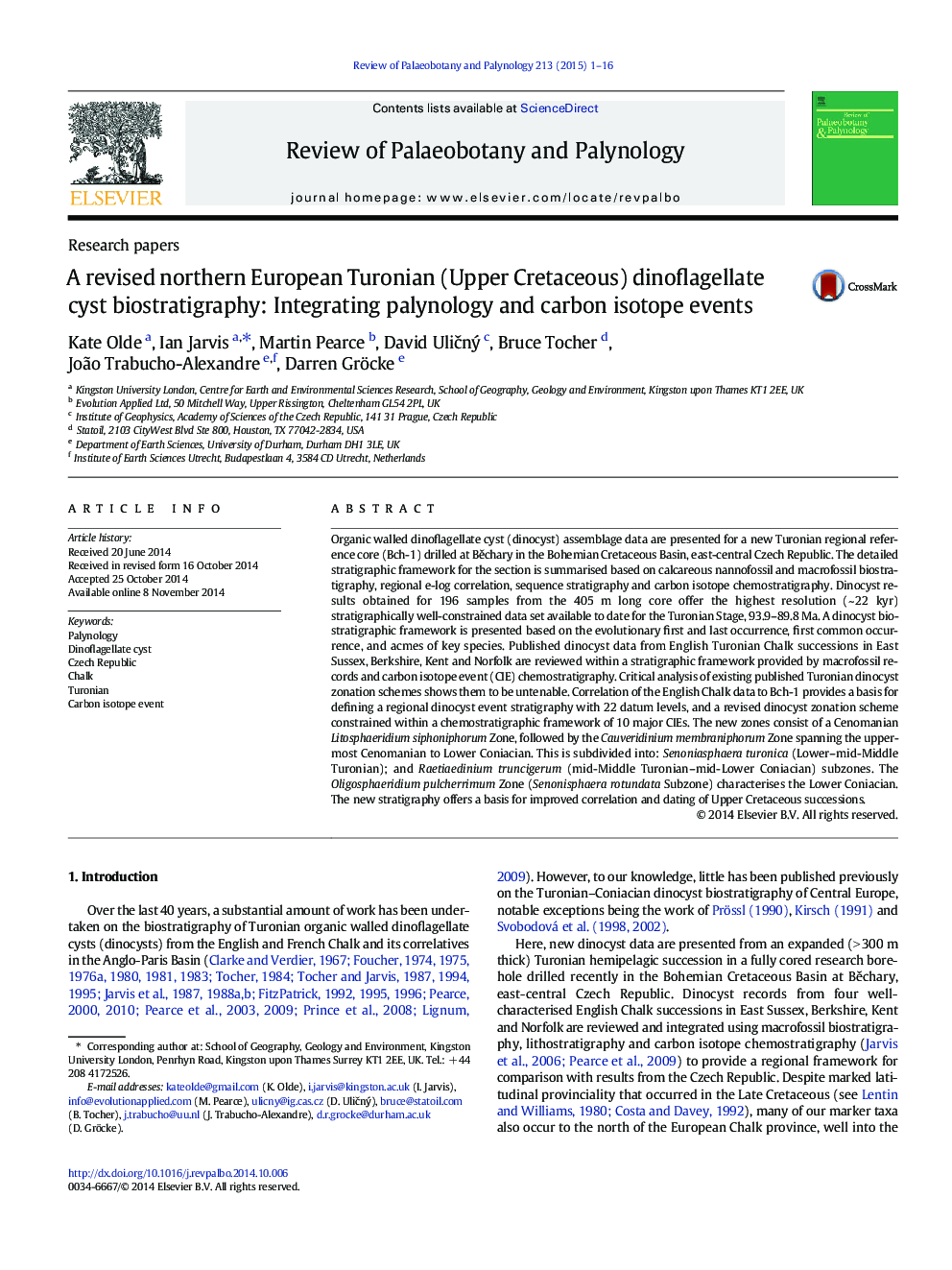| Article ID | Journal | Published Year | Pages | File Type |
|---|---|---|---|---|
| 4750170 | Review of Palaeobotany and Palynology | 2015 | 16 Pages |
•New dinocyst records and CIEs provide a basis from high-resolution correlation.•A northern European dinocyst event stratigraphy with 22 datum levels is developed.•A revised dinocyst zonation scheme is proposed for the Turonian Stage.
Organic walled dinoflagellate cyst (dinocyst) assemblage data are presented for a new Turonian regional reference core (Bch-1) drilled at Běchary in the Bohemian Cretaceous Basin, east-central Czech Republic. The detailed stratigraphic framework for the section is summarised based on calcareous nannofossil and macrofossil biostratigraphy, regional e-log correlation, sequence stratigraphy and carbon isotope chemostratigraphy. Dinocyst results obtained for 196 samples from the 405 m long core offer the highest resolution (~ 22 kyr) stratigraphically well-constrained data set available to date for the Turonian Stage, 93.9–89.8 Ma. A dinocyst biostratigraphic framework is presented based on the evolutionary first and last occurrence, first common occurrence, and acmes of key species. Published dinocyst data from English Turonian Chalk successions in East Sussex, Berkshire, Kent and Norfolk are reviewed within a stratigraphic framework provided by macrofossil records and carbon isotope event (CIE) chemostratigraphy. Critical analysis of existing published Turonian dinocyst zonation schemes shows them to be untenable. Correlation of the English Chalk data to Bch-1 provides a basis for defining a regional dinocyst event stratigraphy with 22 datum levels, and a revised dinocyst zonation scheme constrained within a chemostratigraphic framework of 10 major CIEs. The new zones consist of a Cenomanian Litosphaeridium siphoniphorum Zone, followed by the Cauveridinium membraniphorum Zone spanning the uppermost Cenomanian to Lower Coniacian. This is subdivided into: Senoniasphaera turonica (Lower–mid-Middle Turonian); and Raetiaedinium truncigerum (mid-Middle Turonian–mid-Lower Coniacian) subzones. The Oligosphaeridium pulcherrimum Zone (Senonisphaera rotundata Subzone) characterises the Lower Coniacian. The new stratigraphy offers a basis for improved correlation and dating of Upper Cretaceous successions.
